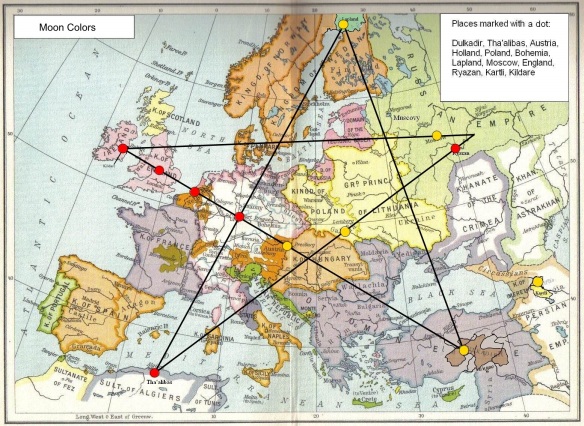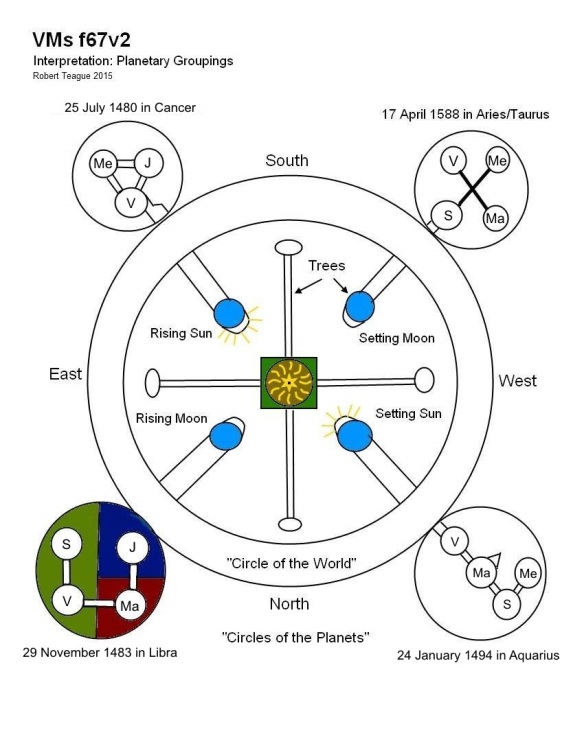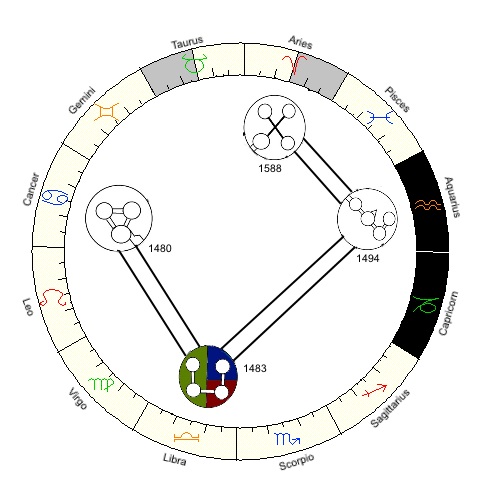It was Rich SantaColoma who first pointed out that the diagram on f69r was based on a drawing of a diatom in a book published ~1860.
I agree with him, which makes the Voynich a late creation (~1850 – 1911).
This discovery neatly solved some problems I had with the timeline of astronomical events, such as the inclusion of Tycho’s supernova of 1572.
I disagree with him that it is a hoax created by W.M. Voynich; I think it’s an authentic work created by someone not known to history. Still, that’s beside my point here.
With this post I am adding more evidence to the Late Creation Theory– that the Cosmati Pavement of Westminster Abbey was the inspiration for the Rosettes Folio.
Some repairs were made to the Cosmati around 1870, and the VMs Author could have seen it then. And there is at least one book with pictures and diagrams dating 1865: Memorials of Westminster Abbey by Dean Arthur Stanley.
I have rotated the 86v folio to the compass points based on the two suns and T-O map found there.
Then I rotated a picture of the Cosmati to the same orientation and superimposed it on the Rosettes Folio, adjusting for the file size differences.
As would be expected, the center and four corner roundels overlap, but the smaller outside four on the Cosmati don’t because they are closer to the center.
The interesting discovery here is that there are at least three designs on each that are similar and close together only with this orientation.
I have added a page above titled Folio f86v and put up the diagrams.






